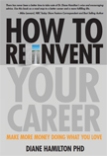Pharmaceutical Representative Jobs Being Replaced by Computers
Ask anyone about a pharmaceutical sales job and you are likely to hear something good about it. People have this conception of the job being glamorous, well-paid and well-respected. It can be glamorous working in a sales division of a large manufacturing company. There may be company cars, plenty of perks, some traveling and even entertainment at events. In my years in pharmaceutical sales, my company paid big bucks at meetings bringing in high end entertainers including: Bill Cosby, Bob Newhart, Kenny Loggins, Martina McBride, Danny Gans, Harry Anderson, Larry Miller, Huey Lewis and many more.
Those days of big spending on the sales force are changing. In fact, the drug makers are not only cutting back on entertaining their sales force, they are actually getting rid of them, replacing them with digital tools. Wall Street Journal reported, “Tens of thousands of pharmaceutical sales reps have been eliminated in the U.S., creating a void that drug makers are now increasingly filling with websites, iPad apps and other digital tools to interact with doctors who prescribe their treatments.”
I was going on my 20th year at AstraZeneca when I quit in 2002. When I first started with the pharmaceutical division of the company in 1987, sales reps didn’t even have computers. Notes about conversations with doctors were handwritten. A sales rep was given certain zip codes as their territory and they had a lot of control over their day and how they interacted with doctors. The plan was to call on each doctor once a month and explain the products.
Fast forward to the early 2000s and by that time, the reps all had handheld computers. Instead of one representative calling on the doctors once a month, sometimes there were 5-10 representatives all calling on the same doctor with the same message every month. Somewhere along the way, big pharma management decided that if the doctor heard a message two times, they were more likely to remember it. That changed to 3 times, 4 times and so on until they hired so many representatives per doctor that when I left, these poor doctors had to listen to the same message delivered to them at least twice a week.
It turned doctors off to the idea of a pharmaceutical sales representative calling on them. Many of them became “no see” doctors which meant they would no longer allow representatives to call on them. According to the Wall Street Journal, “In 2009, one of every five doctors in the U.S. was what the industry calls a “no see,” … Just a year later, that jumped to one in four.”
Before I left AstraZeneca, they were already beginning to work on some computer-based sales presentations. Doctors were not really catching onto that idea a decade ago, but the digital market has become much more popular since then. The Wall Street Journal reported, “AstraZeneca set up a digital marketing group in 2009 and substantially ramped up its work last year, says John McCarthy, vice president of commercial strategy and operations in the U.S. The group, which is primarily focused on marketing to health-care providers as opposed to consumers, created “AZ Touchpoints,” a website doctors can use to ask questions, order free samples and ask about insurance coverage. The site also contains brochures and other “educational materials” that doctors can print out.”
What does this mean for the pharmaceutical sales representative job? “Last year, AstraZeneca said it planned to eliminate 10,400 jobs by 2014, including thousands of sales positions in Western markets. The company said the cuts, amounting to about 16% of its work force, would help it save $1.9 billion a year by 2014.”
Looks like I left at the right time . . .








Reply